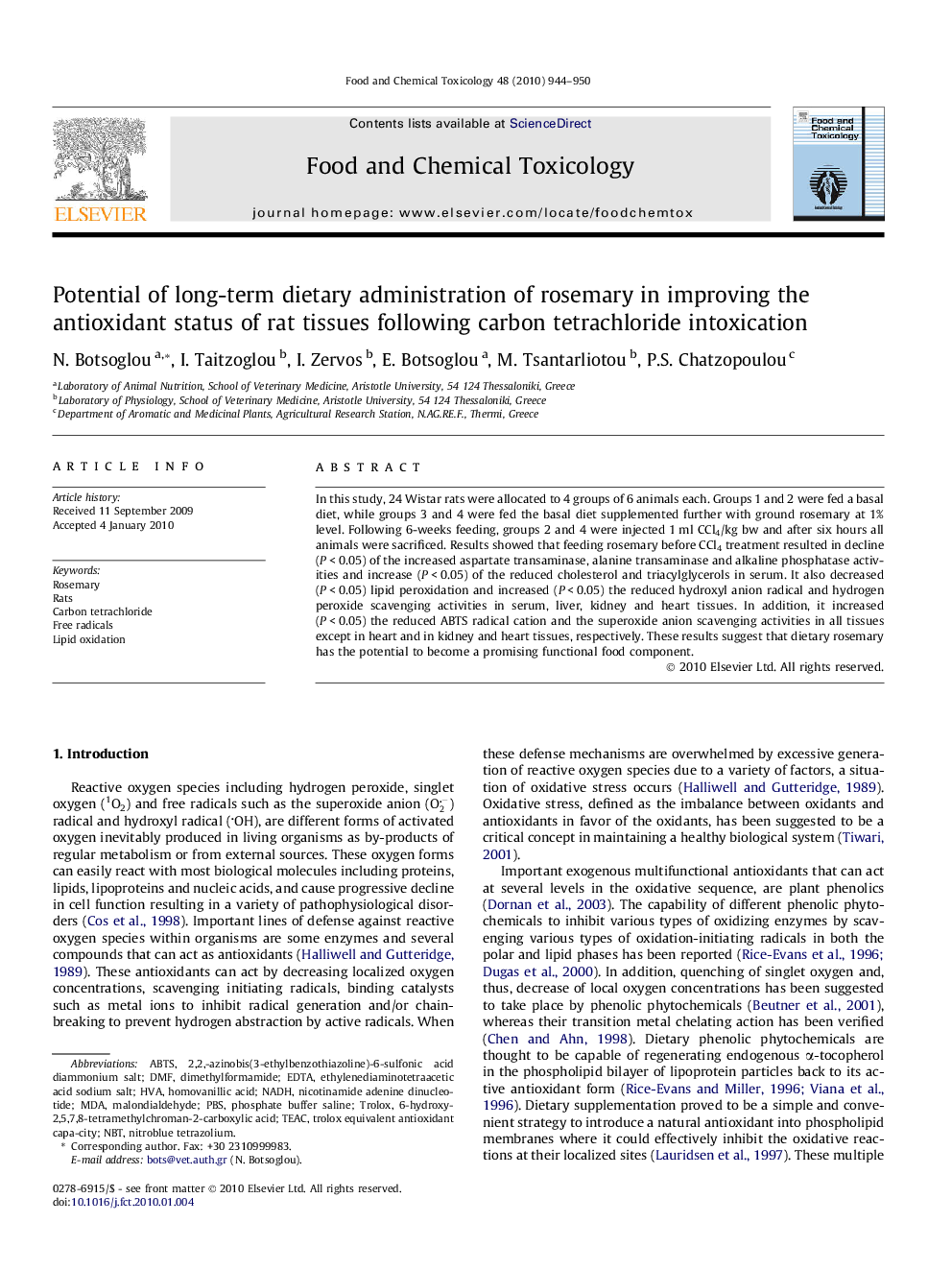| Article ID | Journal | Published Year | Pages | File Type |
|---|---|---|---|---|
| 5854012 | Food and Chemical Toxicology | 2010 | 7 Pages |
Abstract
In this study, 24 Wistar rats were allocated to 4 groups of 6 animals each. Groups 1 and 2 were fed a basal diet, while groups 3 and 4 were fed the basal diet supplemented further with ground rosemary at 1% level. Following 6-weeks feeding, groups 2 and 4 were injected 1Â ml CCl4/kg bw and after six hours all animals were sacrificed. Results showed that feeding rosemary before CCl4 treatment resulted in decline (PÂ <Â 0.05) of the increased aspartate transaminase, alanine transaminase and alkaline phosphatase activities and increase (PÂ <Â 0.05) of the reduced cholesterol and triacylglycerols in serum. It also decreased (PÂ <Â 0.05) lipid peroxidation and increased (PÂ <Â 0.05) the reduced hydroxyl anion radical and hydrogen peroxide scavenging activities in serum, liver, kidney and heart tissues. In addition, it increased (PÂ <Â 0.05) the reduced ABTS radical cation and the superoxide anion scavenging activities in all tissues except in heart and in kidney and heart tissues, respectively. These results suggest that dietary rosemary has the potential to become a promising functional food component.
Keywords
PBSMDATEACNBTDMFABTS6-hydroxy-2,5,7,8-tetramethylchroman-2-carboxylic acidnitroblue tetrazoliumEDTALipid oxidationTroloxdimethylformamideFree radicalsRosemaryTrolox equivalent antioxidant capacityphosphate buffer salinemalondialdehydeRatsNADHNAD, nicotinamide adenine dinucleotidehomovanillic acidHVACarbon tetrachloride
Related Topics
Life Sciences
Agricultural and Biological Sciences
Food Science
Authors
N. Botsoglou, I. Taitzoglou, I. Zervos, E. Botsoglou, M. Tsantarliotou, P.S. Chatzopoulou,
